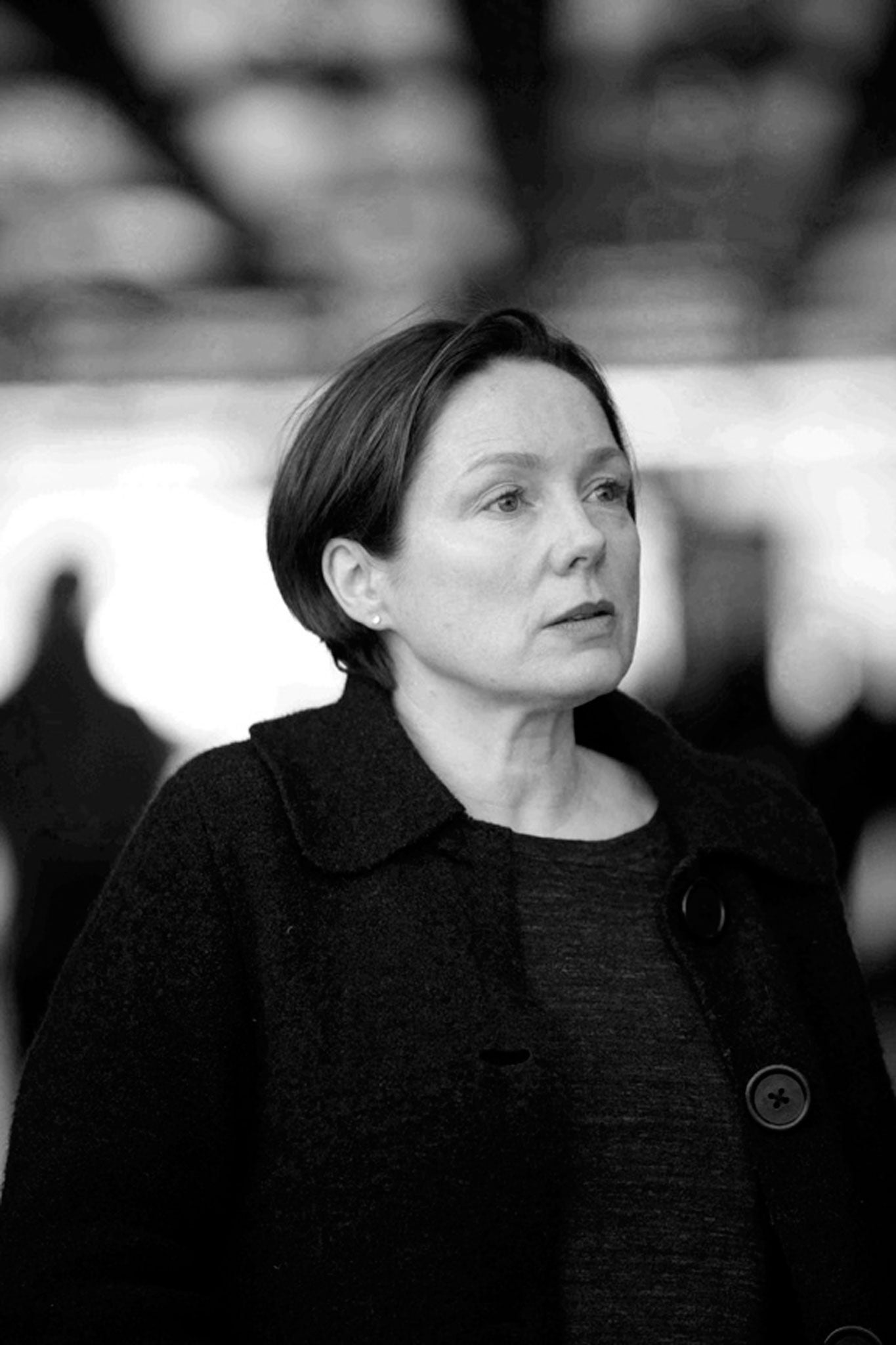Lavinia Greenlaw: One Minute Interview

Where are you now and what can you see?
In my study in front of a dark-grey wall, empty except for a photograph of mudflats. To my left is a window out of which I can see the dilapidated roofs of a derelict factory and mission hall and an increasing quantity of dark-grey clouds.
What are you currently reading?
Having just judged a fiction prize, not fiction – historical texts about vision for work I’m doing as part of a Wellcome Fellowship. I’m going back to where I started, writing about trying to make sense of what and how we see.
Choose a favourite author and say why you admire her/him
Elizabeth Jane Howard, whose depictions of birth, death and all we negotiate in between are finely written and shockingly wise. She is cast as a writer of the domestic, when she is a writer of life.
Describe the room where you usually write
There’s the dark-grey wall, so it’s rather like working inside a storm cloud. I have my father’s surgery desk, a broken microscope and a working hour-glass. And a place to sleep, where I write more than at the desk.
Which fictional character most resembles you?
Gulliver. I’m easily unanchored and susceptible to a loss of proportion and scale. I also get lost all the time and do not trust my own eyes.
Who is your hero/heroine from outside literature?
Margaret Tait, born on Orkney in 1918, who made her way to Rome to study film and returned home to produce extraordinary film-poems.
Lavinia Greenlaw’s latest book, ‘A Double Sorrow: Troilus and Criseyde’, is published by Faber & Faber. She is chair of the olio Prize, 2014
Join our commenting forum
Join thought-provoking conversations, follow other Independent readers and see their replies
Comments
Bookmark popover
Removed from bookmarks